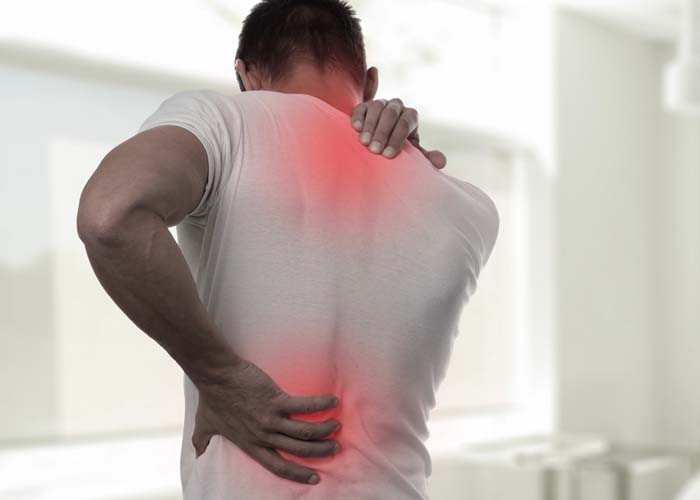Do air mattresses hurt your back? It’s a question that many people ask, but few have the answer to. In this article, we’ll examine air mattresses and their effects on back pain.
What are air mattresses?
Air beds and air mattress are the same. They’re inflated through a battery-operated or manually operated air pump which you can plug into an electrical socket. You’ll also see airbeds marketed as air mattresses, inflatable beds, blow up beds, etc. These all refer to air beds.
An air bed is usually filled with air (rather than water) and has a flocked top to improve sleeping comfort. The air in airbeds can be adjusted to suit the user’s taste, but it often feels firmer than its conventional counterparts due to reduced padding and support. If an airbed is filled with air rather than water, they’re lighter and easier to move around.
Where are they used
Most of the time, you’ll see people using air beds for camping or on holiday trips, but it’s by no means unheard of that someone uses one at home instead of a traditional bed. There are many reasons why air beds are preferred over conventional mattresses.
They’re more portable than regular beds, making them ideal for sleepovers or camping trips. You can also quickly deflate and pack up an air bed to store away when it’s not being used. This is especially useful if you have limited space at home where you need to accommodate guests occasionally.
Why air mattresses hurt your back
When air beds were first introduced, they gained popularity because people found them to be more comfortable than regular mattresses. A major reason for this was that airbeds are firm and don’t sag like an old mattress would, making it feel closer to the ground even though it’s slightly elevated (which also makes air beds easier to get in and out of).
However, air beds are not your back’s best friend. They may look firm, but they’re very soft because air mattresses lack the springs that support a regular mattress. Without these coils keeping you supported while you sleep, airbeds can quickly lead to back pain if used for an extended time.
Air mattresses can do to your back if you’re not careful to compress the spine, leading to a curvature in the neck and upper back (i.e., kyphosis). You’ll also experience lower back pain from air beds because there’s no support for that region either, which means that it could sag under the weight of your upper body. No matter which air mattress you use, it will never be as good for your back as a regular bed because air beds don’t have the needed support.
Also, note that children’s spines are not fully developed yet, making them more susceptible to damage from sleeping on air mattresses.
How to prevent back pain when using an air mattress
Despite air beds not being the best choice for your back, there are ways to minimise any pain while you sleep on an air mattress. Here are some tips that will help:
– Use a fitted sheet designed specifically for air mattresses. This is especially important if air beds have flocked tops like regular mattresses do because these sheets provide more excellent air circulation and help air beds feel softer.
– Use a foam mattress topper on an airbed for added comfort and support (the air in the airbed will still be able to flow through). You can also use your regular pillow or memory foam pillows with air mattresses since these provide enough neck support while you sleep.
– Put air beds on a sturdy surface. If you can, use airbeds indoors where you have solid floors that won’t warp or crack under the weight of an air mattress.
– Make sure the air pressure is set at your preferred level so there are no dips in sleeping comfort (you will be able to adjust this even if manual pumps are used).
– If air beds make your back hurt, consider sleeping on a mattress topper instead. These can be offering the same level of support as traditional beds do (plus they are portable like air beds)
How to find the best air mattress for your back air
If you decide to use air beds instead of regular mattresses, make sure that the air mattress is comfortable and provides enough back support. Many air beds are available in stores, but not all offer good quality or comfort (it’s best to avoid air bed models with built-in pumps as these can break easily). You will also find adjustable air mattresses, which means you can inflate or deflate them to add comfort based on your preferences.
When shopping for air beds, look for ones with a flocked top, so the sleeping surface feels softer and more like a regular mattress. You should also get airbeds with coils in their construction since these will provide better support than air beds without them.
Lastly, consider air bed models that are adjustable since these can be inflated to your preferred firmness level for added comfort. At the same time, you sleep (air mattresses without this feature may feel too soft or too hard depending on the amount of air used).
However, it’s always best to buy air beds from a trusted air mattress brand because these will offer better comfort and support than air bed models made by less popular companies.
Can you sleep on an air mattress every night?
It’s best to look at a more permanent solution. If air beds consistently give you back pain, it’s best to avoid using them completely. Even if air bed models with built-in pumps are available, these will wear out quickly and become unusable over time (this is true for air mattress pads as well).
Consider a mattress topper instead of buying an air bed that doesn’t offer enough support to your lower back. These are portable and can be used with air beds or even traditional mattresses, which means you will have a better night’s sleep while getting the back pain relief you need.

 Nectar Mattress
Nectar Mattress 


